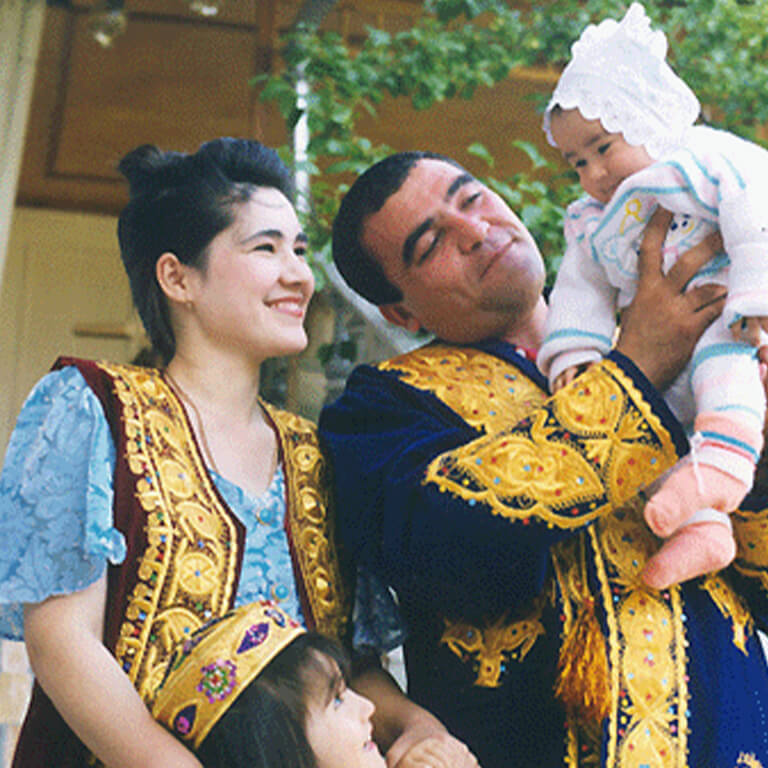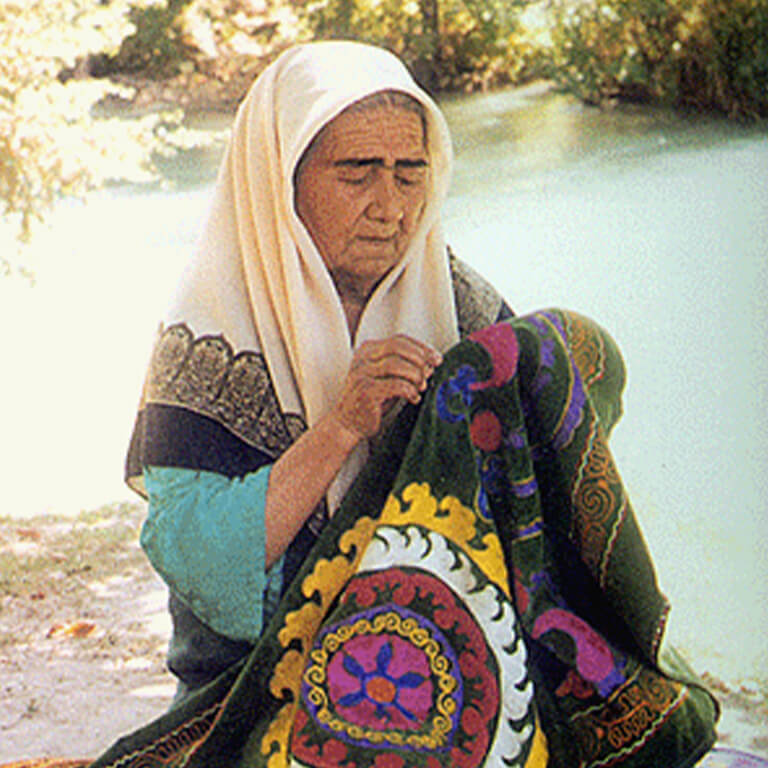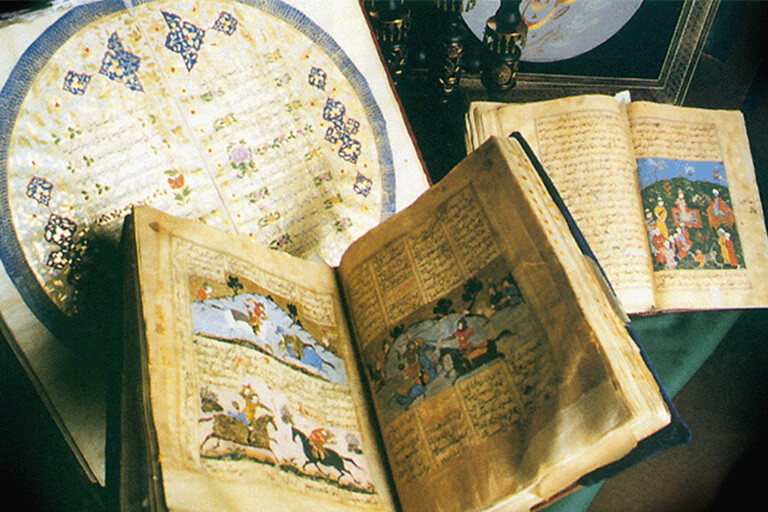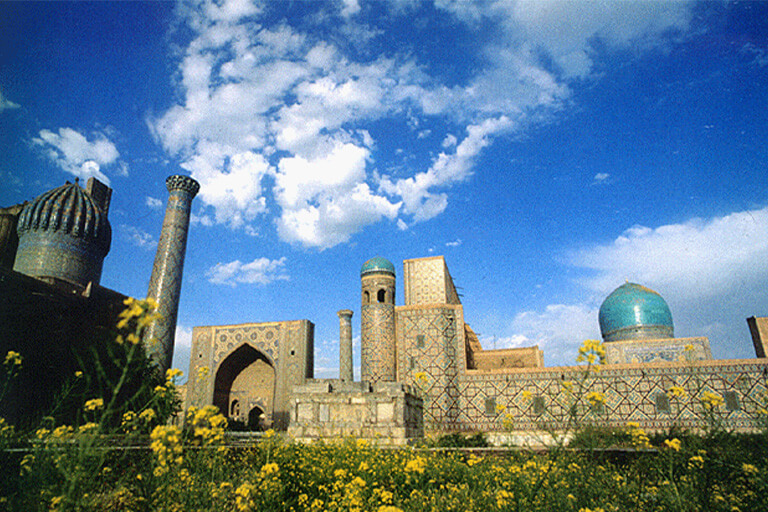Uzbeks are the most numerous Turkic people in Central Asia. They mostly live in Uzbekistan, a landlocked country of Central Asia that shares borders with Kazakhstan to the west and north, Kyrgyzstan and Tajikistan to the east, and Afghanistan and Turkmenistan to the south. Many Uzbeks can also be found in Afghanistan, Kazakhstan, Kyrgyzstan, Tajikistan, Turkmenistan, and the Xinjiang Uyghur Autonomous Region of China.
Who Are the Uzbeks and Where Do They Live?

What Kind of Language is Uzbek?
Uzbek belongs to the Turkic group of languages, which includes languages such as Kazakh, Turkish, Uyghur, and Tatar. Turkic languages have been spoken across vast territory from the Balkans to China for many centuries. Within the Turkic group, Uzbek and Uyghur form the Qarluq sub-branch.
Uzbek is predominantly spoken in the Republic of Uzbekistan, of which it is the sole official language. Statistics show that 22 million of Uzbekistan’s population of 30 million have Uzbek as their first language. But many of Uzbekistan’s minority populations, especially those who live in rural areas of Uzbekistan, speak Uzbek as their second language.

Uzbek is an agglutinative language. Suffixes that indicate only one meaning are attached to the word stem one after another in a set order. This process creates words that can be very long and sometimes can correspond to a whole sentence in English. But Uzbek doesn’t have the difficulties that inflecting languages have with grammatical gender and multiple systems of declension and conjugation.
The vocabulary and even grammar of Uzbek have been influenced by Persian, which served as a lingua franca throughout Central Asia for centuries. The main dialects of Uzbek lack “vowel harmony,” a distinctive feature of most other Turkic languages. Moreover, Arabic words also make up much of the Uzbek vocabulary. Most of the international words in Uzbek, such as telefon, mashina, and garaj, entered Uzbek through Russian.
What Alphabet Do Uzbek Use?

Throughout its history, the language used a number of alphabets. Before 1928, the language was written in Perso-Arabic script. However, during the early years of the Soviet Union, its vocabulary went through many changes. The language was codified and standardized, with the dialects of major cities of Tashkent and Fergana as the basis of standard Uzbek. In 1929, the alphabet was replaced by the new Latin alphabet, also known as Yanalif (Yangi alifbo – New Alphabet). Later, in 1940, the Latin script was abolished and Uzbek switched to Cyrillic, as with the majority of Soviet written languages. In 1993, after the collapse of the Soviet Union, the Latin script began to be reintroduced in a gradual fashion, and by 1995 was fully incorporated back as the official alphabet of use.
What is Uzbek Culture Like?
For many centuries, Central Asia has been the crossroads of numerous empires and cultures. Thus the local people and their traditions have been influenced by cultures and civilizations from Greece to China, and from Middle East to Siberia for millennia.

Before the Arab invasion of the modern territory of Uzbekistan, the people in the area followed Zoroastrianism and Buddhism. After the Arab invasion, people began converting to Islam as early as 8th century AD. Today, the majority of Uzbeks have a Sunni Muslim background. However, due to the Soviet past, Uzbek society is relatively secular. Traditionally, Uzbeks are a family and community oriented society. Each individual is usually identified with reference to his or her family. Uzbek neighborhoods are usually divided into mahalla, a primary source of social services for community residents. Members of the mahalla call on each other for help, and together organize traditional cultural events and ceremonies.

One-third of the Uzbek population is farmers. Uzbeks are well known for their fruits and vegetables, and even have annual competitions for the biggest and the sweetest melons and cantaloupes. Other staple crops include wheat, barley, corn and rice. Because of this influence, Uzbek cuisine is rich in breads and noodles. Additionally, mutton is very popular because of the abundance of sheep in the area. In fact, Uzbekistan’s signature dish, palov, is a course made from rice, mutton, and grated carrots and onions.
Uzbek craftsmanship varies enormously in style, material, and ornamentation. Today, Uzbek craftsmen still practice ancient traditions of metal engraving, wood carving, gemstone cutting, embroidery, and weaving. Traditional applied arts are still highly valued, and used in people’s everyday life. Poetry, literature, and music form a daily part of life for many Uzbeks.
Some Useful Phrases in Uzbek
Salom. Mening ismim Jon. [sæˈlɑm. mɛˈniŋ isˈmim ʤɑn] /Salom. Mening ismim Jon./ Hi. My name is John.
Sizning ismingiz nima? [sizˈniŋ ˈismiŋiz niˈma] /Sizning ismingiz nima?/ What is your name?
Mening ismim Ahmad. [mɛˈniŋ isˈmim ahˈmad̪] /Mening ismim Ahmad./ My name is Ahmad.
Yaxshimisiz? [jaχˈʃimisiz] /Yakhshimisiz?/ How are you doing?
Yaxshi, rahmat. [jaχˈʃiman rahˈmat̪] /Yakhshi, rahmat./ I am good, thank you.
Men sizni sevaman. [mɛn sizˈni sevaˈmæn] /Men sizni sevaman./ I love you.
Hojatxona qayerda? [hoˈʤat̪χoˌna qaɪjerˈd̪a] /Hojatkhona kayerda?/ Where is the bathroom?
Katta rahmat. [kæˈt̪ːa rahˈmat̪] /Katta rahmat./ Thank you very much.
Xayr. [χaɪr] /Khayr./ Good-bye.
Five Reasons Why You Should Learn More About Uzbeks and Their Language
- Uzbek is spoken as a first or second language by 25 million people throughout Central Asian, most notably in Uzbekistan, Kazakhstan, Kyrgyzstan, Tajikistan, and Turkmenistan. Additionally, large populations of Uzbek speakers can be found in Australia, China, Germany, Israel, Russia, Turkey, Ukraine, and the U.S.
- A member of the Turkic language family, Uzbek shares many structural similarities to languages such as Azerbaijan, Kazakh, and Kyrgyz, Tartar, and Turkish. But it is most closely related to Uyghur.
- Uzbeks are the largest ethnic group among the post-Soviet Central Asian Republics. Uzbekistan has a population of 30 million, and Uzbeks form substantial minorities in the other four neighboring republics.
- Modern Standard Uzbek is the best foundation for learning Chaghatay Turkic, the language of worldfamous poets like Navoi and the Babur nameh, the most revealing autobiography penned in the premodern Islamic world.
- Modern Uzbek is written using Latin script, so there is no new writing system to learn and no new fonts to download for typing! Plus Uzbek grammar is very consistent. There is no grammatical gender (like French, Spanish, and Arabic have) and there are no irregular verbs.

